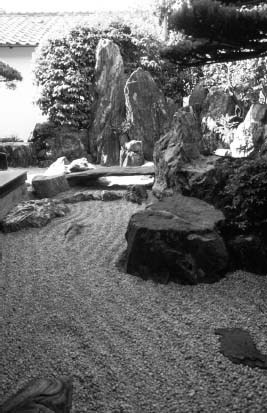BuddhismSigns and Symbols |
What will I see if I visit a Buddhist temple? |
A lot depends on where you are and the size of the temple. Local or neighborhood temples are generally of simpler design than those that function like “cathedral” temples or are closely associated with the main institution of a monastic community. Larger foundations throughout Asia are often visible from a distance, punctuating the skyline with their stupa spires or lofty pagodas. Walled enclosures entered through monumental gateways surround the more important foundations. Before entering any temple, however grand or humble, you will see a rack in which to deposit your footwear. Interior appointments vary somewhat according to culture and denomination.
Most traditional temples are divided into two main areas. The congregational space usually has no furniture. When worshippers pause for meditation or recitation, they ordinarily either stand or sit on the floor. Some temples have individual meditation pillows stacked along the walls. But some Buddhist temples in Europe and the United States have adopted the Protestant Christian use of pews or benches without kneelers. Many such temples actually belong to denominations that call themselves “churches.” Look at the back of a bench and you are likely to find hymn books in a rack. Many temples separate the sanctuary area from the body of the building with a railing or columns. A large image of the Buddha or a major Bodhisattva stands or sits atop an altar, sometimes in the company of several smaller images. Before the altar is a place for the priest or prayer leader to sit. Side altars dedicated to Bodhisattvas or holy persons, such as founders of the various lineages, are not uncommon. Some temples have meditative gardens adjacent to the formal worship space.

A Zen dry meditation garden in Daisen-in, one of twenty-three subtemples of Kyoto’s Daitoku-ji.
